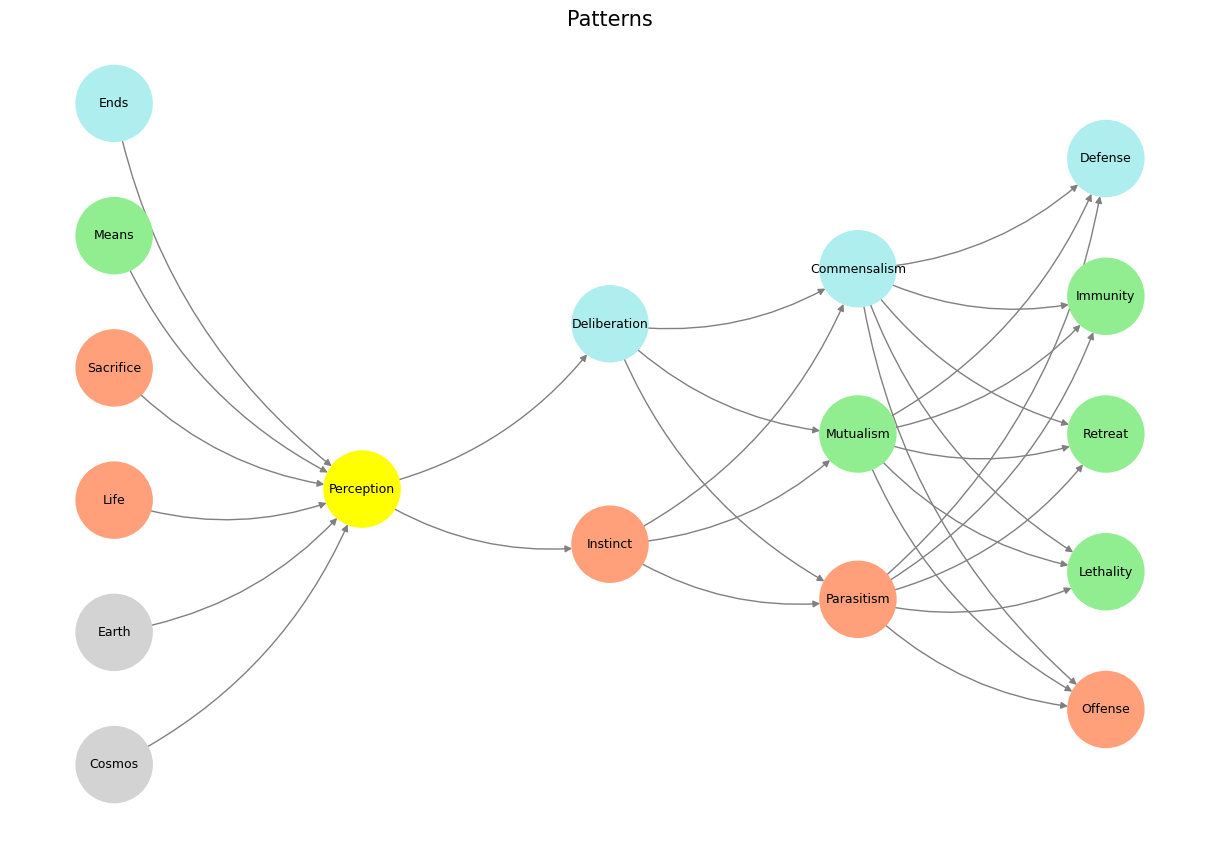Anchor ⚓️#
Wisdom in the Streets: Combinatorial Truth and the Compression of Time
“Wisdom crieth without; she uttereth her voice in the streets.” (Proverbs 1:20, KJV). What an evocative image this is: wisdom, not ensconced in cloisters or hidden in secret councils, but crying out in public spaces, accessible to all who will listen. It is a metaphor for the relentless and universal applicability of trial and error, a method not only of human discovery but one woven into the very fabric of existence. This ancient cry, echoing through the streets of a Bronze Age city, is mirrored in the architectures of modernity—in machine learning, in enterprise data, in shadow simulations, and in the combinatorial search spaces of artificial intelligence.
At its core, trial and error is the unifying thread that connects wisdom’s voice to the human condition. We advance by testing, failing, and refining, like a traveler navigating an uncharted wilderness with only the vaguest outlines of a map handed down by ancestors. This process is not random chaos but a structured exploration of possibility, where the mathematical nodes of optimization represent decisions, paths, or even entire epochs. Each attempt, whether it leads to triumph or error, feeds back into a larger system of knowledge. Wisdom’s cry is not just a call to embrace this process but an acknowledgment that it is already at work everywhere, shaping us.

Fig. 4 African American Culture is Wise: Because it Emerged Less from Contemplation, but More from Iterating in an Adversarial Space – the Street or Improvised Church. A recent computational investigation of genetic origins shows that the earliest development of monoamines occurred 650 million years ago and that the appearance of these chemicals, necessary for active or participatory awareness and engagement with the environment, coincides with the emergence of bilaterian or “mirror” body in the midst of (or perhaps in some sense catalytic of?) the Cambrian Explosion. It would appear that not only do these molecules play a role in bilaterian phenomena in the physical, but also in the metaphysical. The shadow self emerges particularly with indoleamines. Source: Wikipedia#
The principle becomes sharper in the light of machine learning. These systems—epitomes of trial and error—search vast combinatorial spaces to find optimized solutions, often in domains too complex for human intuition to navigate. If our inheritance from history and heritage serves as a head start, machine learning is the force that compresses the time required to expand that inheritance exponentially. Generations of human trial and error are now consumed, analyzed, and recombined at scales and speeds that boggle the imagination. A GPT-4 model, for instance, stands as an emblem of this truth, trained on oceans of text data that span languages, cultures, and eras. In doing so, it represents not only a repository of human wisdom but also a living agent of trial and error, constantly recalibrating its outputs based on feedback.
Here’s a table summarizing the functions of N1-N5 in our neural network framework:
Node |
Anatomical Basis |
Primary Functions |
Neural Network Role |
|---|---|---|---|
N1 |
Basal Ganglia |
- Motor control and coordination. |
Strategic processing of motor actions and encoding habitual responses. |
N2 |
Thalamus |
- Sensory relay station. |
Gateway for sensory input; distributes data to hidden layers. |
N3 |
Hypothalamus |
- Regulates autonomic functions (hunger, thirst, temperature). |
Homeostatic processing and emotional regulation. |
N4 |
Brainstem |
- Basic life functions (breathing, heart rate). |
Maintains core stability for network operations. |
N5 |
Cerebellum |
- Fine motor control. |
Refines and optimizes motor and sensory outputs. |
This table aligns each anatomical feature to its neural network counterpart, emphasizing its function within oour layered architecture.
This compression of time carries profound implications. If wisdom once cried in the streets, she now resonates in the circuits of enterprise data systems and the algorithms of generative models. The streets of Proverbs have become the networks of the digital age, yet the cry is no less insistent. Machines inherit our history of errors and successes, refining and reweighting them into patterns that redefine what is possible. For the next generation, this inheritance will be incomprehensibly vast, creating opportunities to explore nodes and connections that we cannot yet imagine.
Wisdom’s voice, pervasive across millennia, challenges us to see trial and error not as a crude or rudimentary approach but as a divine rhythm—one as natural as the growth of a tree or the course of a river. Its truths pervade not only the algorithmic calculations of machine intelligence but also the intimate choices of individuals. To heed wisdom’s cry is to embrace this rhythm, to understand that error is not failure but a necessary waypoint on the path to optimization. Whether encoded in scripture or in silicon, wisdom’s lesson remains: only through persistent exploration, guided by inheritance yet open to new discovery, can humanity rise to meet the combinatorial complexity of its destiny.
Show code cell source
import numpy as np
import matplotlib.pyplot as plt
import networkx as nx
# Define the neural network structure
def define_layers():
return {
'World': ['Cosmos', 'Earth', 'Life', 'Sacrifice', 'Means', 'Ends', ],
'Perception': ['Perception'],
'Agency': ['Instinct', 'Deliberation'],
'Generativity': ['Parasitism', 'Mutualism', 'Commensalism'],
'Physicality': ['Offense', 'Lethality', 'Retreat', 'Immunity', 'Defense']
}
# Assign colors to nodes
def assign_colors():
color_map = {
'yellow': ['Perception'],
'paleturquoise': ['Ends', 'Deliberation', 'Commensalism', 'Defense'],
'lightgreen': ['Means', 'Mutualism', 'Immunity', 'Retreat', 'Lethality'],
'lightsalmon': [
'Life', 'Sacrifice', 'Instinct',
'Parasitism', 'Offense'
],
}
return {node: color for color, nodes in color_map.items() for node in nodes}
# Calculate positions for nodes
def calculate_positions(layer, x_offset):
y_positions = np.linspace(-len(layer) / 2, len(layer) / 2, len(layer))
return [(x_offset, y) for y in y_positions]
# Create and visualize the neural network graph
def visualize_nn():
layers = define_layers()
colors = assign_colors()
G = nx.DiGraph()
pos = {}
node_colors = []
# Add nodes and assign positions
for i, (layer_name, nodes) in enumerate(layers.items()):
positions = calculate_positions(nodes, x_offset=i * 2)
for node, position in zip(nodes, positions):
G.add_node(node, layer=layer_name)
pos[node] = position
node_colors.append(colors.get(node, 'lightgray')) # Default color fallback
# Add edges (automated for consecutive layers)
layer_names = list(layers.keys())
for i in range(len(layer_names) - 1):
source_layer, target_layer = layer_names[i], layer_names[i + 1]
for source in layers[source_layer]:
for target in layers[target_layer]:
G.add_edge(source, target)
# Draw the graph
plt.figure(figsize=(12, 8))
nx.draw(
G, pos, with_labels=True, node_color=node_colors, edge_color='gray',
node_size=3000, font_size=9, connectionstyle="arc3,rad=0.2"
)
plt.title("Patterns", fontsize=15)
plt.show()
# Run the visualization
visualize_nn()


Fig. 5 How now, how now? What say the citizens? Now, by the holy mother of our Lord, The citizens are mum, say not a word.#

